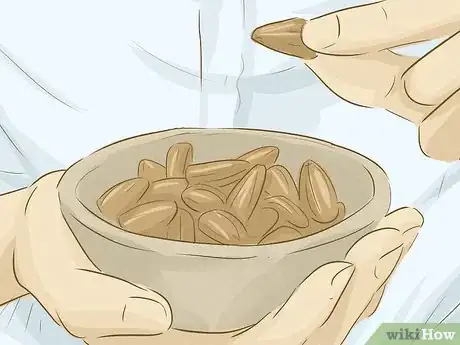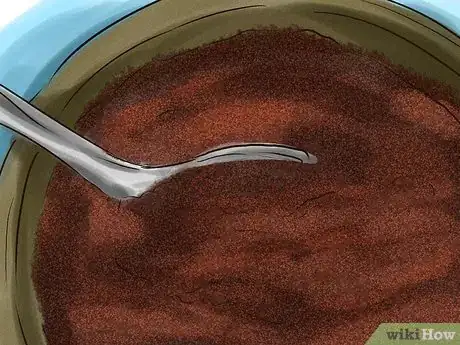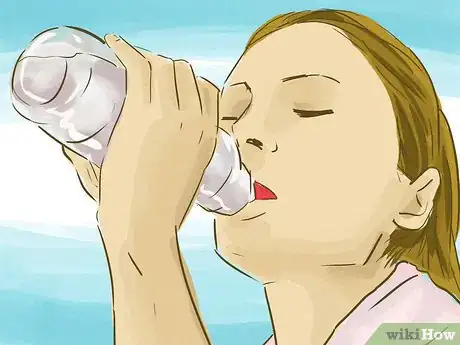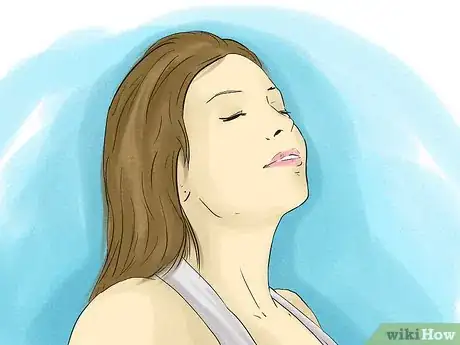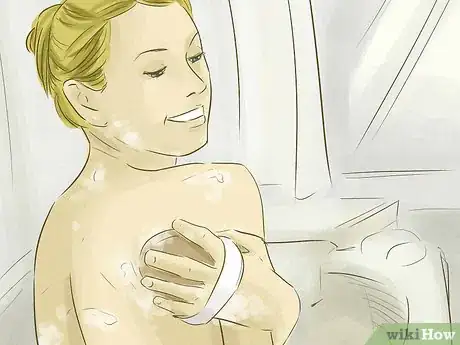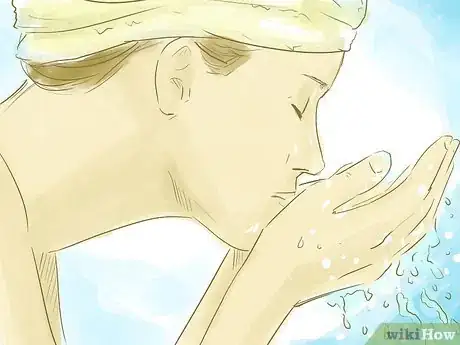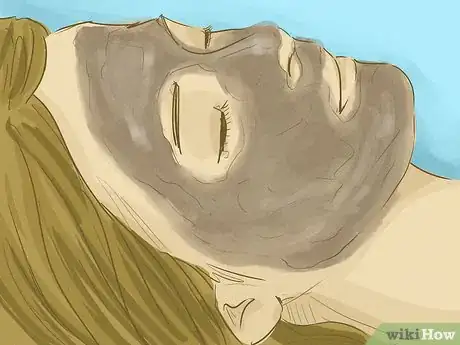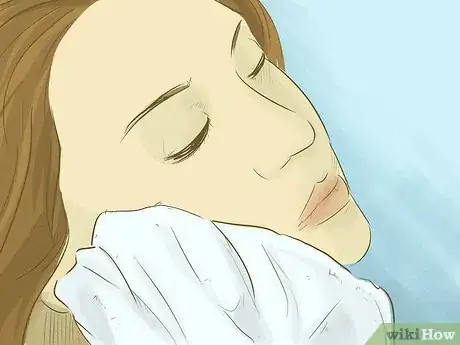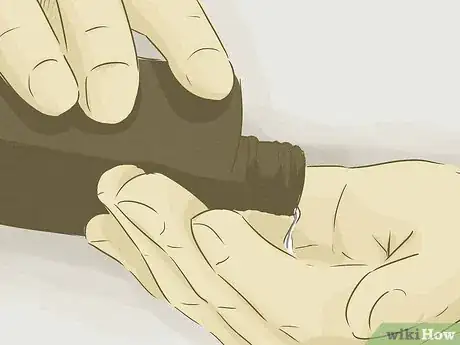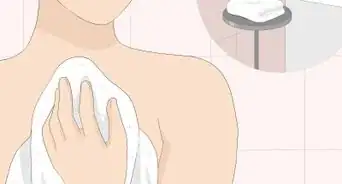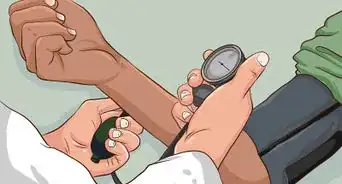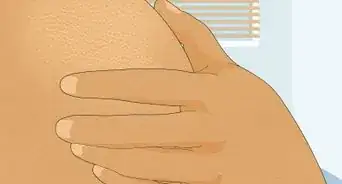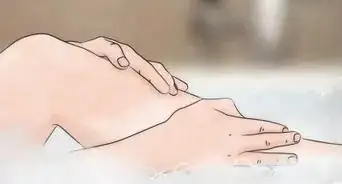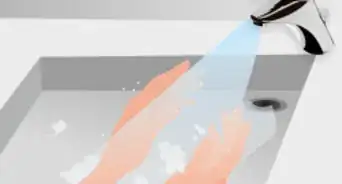This article was co-authored by wikiHow Staff. Our trained team of editors and researchers validate articles for accuracy and comprehensiveness. wikiHow's Content Management Team carefully monitors the work from our editorial staff to ensure that each article is backed by trusted research and meets our high quality standards.
There are 14 references cited in this article, which can be found at the bottom of the page.
This article has been viewed 41,919 times.
Learn more...
A Moroccan bath (or hammam) is a centuries-old cleaning ritual that softens the skin while relaxing tired muscles. This bathing technique is one of the most luxurious ways to remove dead skin layers. Even if you live far from Moroccan bathhouses, you can still pamper yourself with a traditional hammam at home. Fill your bathroom with steam to cleanse your pores, then use black soap and a mud treatment to introduce purifying nutrients to your skin.
Steps
Preparing the Bath
-
1Break the Moroccan mud into small pieces. Before you start your bath, get the mud ready for easy application later on. When you buy the mud, you will probably receive it in a rock-hard block. Separating the mud into smaller pieces will soften it faster.[1] ]
-
2Place the mud into a bowl and mix in yogurt and water. Look at your mud block's packaging for how much water and yogurt to include. Yogurt is essential for exfoliation thanks to its lactic acid. The antibacterial and antifungal properties of yogurt also protect against blemishes. Continue mixing the mud until it softens into clay.[2]
- You can also add honey, which nourishes the skin thanks to its antioxidant properties.
Advertisement -
3Fill your bathroom with steam. Steaming your bathroom will open your pores and prepare your skin to absorb the Moroccan soap and mud. Shut any windows and doors, and cover any openings (like the door's bottom) with a towel. Turn on the hot water to fill the tub and let it run until the room is steamy.[3]
-
4Protect yourself against dehydration. Keep yourself hydrated for the duration of the bath. Bring a water bottle with you into the room to drink periodically. Wet a washcloth with cold water and apply it to your neck or forehead if you feel lightheaded. Leave the room if you begin to feel faint or nauseated. [4]
-
5Sit in the steam for 10-15 minutes. Before you enter the bath, relax and let the steam work into your skin. If you feel lightheaded, open a door or window and drink more water.[5]
Cleansing Your Skin
-
1Soak in the bathwater for several minutes. Wait around five to ten minutes before you begin massaging and exfoliating your skin. If the water has cooled too much while you were steaming off, add more until the temperature warms to your liking.[6]
-
2Massage the black soap onto your body. Work the soap into a lather, then rub it all over your skin, from your feet to your shoulders. Use circular movements to knead the soap into your pores. When you apply the soap to your face, avoid getting too near your eyes or mouth.[7]
- Black soap reacts uniquely to different skin types and can dry some types out. Use a moisturizer if your skin feels irritated after the bath.[8]
-
3Use a washcloth to exfoliate. Rub a washcloth up and down your body to remove dead skin cells. Put this washcloth wherever you massaged the black soap. Rub the washcloth firmly but not harsh enough that your skin stings.[9]
-
4Rinse off the soap. Once you've thoroughly exfoliated your skin, stop before your skin feels irritated or raw. Cup your hands in the warm water and pour it on your skin until you have thoroughly rinsed away soap residue.
Applying the Mud
-
1Rub the mud on your body. Retrieve the mud bowl and apply the clay to your body. Focus on dry or rough areas of skin. Moroccan mud is safe to put on your face, but avoid getting the mud near your eyes.[12]
- Step out of the bath while you apply the mud.
- If you get mud in your eyes, flush them out with cool running water for 15-20 minutes, then call poison control for further instruction.[13]
-
2Let the mud sit for 5-10 minutes. Mud needs time to sit before your skin absorbs the cleansing minerals. Wait at least five minutes, then rinse the mud off your skin. Step out of the bath and rinse yourself clean in the shower. You should notice softer skin immediately after the bath.[14]
- Cold showers work best to re-close your pores.
-
3Dry off with a towel. Drying yourself too vigorously can remove some of the cleansing minerals and roughen your skin. Blot your skin until dry instead of rubbing. Put your towel in the dryer beforehand to quickly dry your skin.
-
4Dab rose water on your skin. After a Moroccan bath, many bathhouses rub rose water into their guests' skin. Rose water is sweet-smelling and cools the skin, reducing inflammation and oiliness. Add a few drops of rose water onto a dry washcloth and pat it into your skin.[15]
Things You'll Need
- Black soap
- Exfoliating washcloth or gloves
- Yogurt
- Moroccan mud
- Rose water
- Towel
References
- ↑ http://fustany.com/en/beauty/skincare/how-to-prepare-a-moroccan-bath-at-home
- ↑ http://livesimply.me/2014/07/10/3-simple-quick-homemade-clay-mask-recipes/
- ↑ https://ofironandoak.com/diy-normal-bathroom-as-a-steamroom/
- ↑ http://saunarevolution.net/sauna-safety/
- ↑ http://flirtingwiththeglobe.com/turkish-bath-tips/
- ↑ http://www.expatwoman.com/dubai/monthly_beauty_spa_massage_turkish_moroccan_17726.aspx
- ↑ http://shesintheglow.com/the-secret-souk/
- ↑ https://www.liveabout.com/how-to-safely-use-african-black-soap-2442530
- ↑ http://www.musingsofamuse.com/2014/04/best-way-exfoliate-face.html
- ↑ http://www.barakabits.com/2014/11/6-steps-prepare-moroccan-bath
- ↑ https://moon.com/2017/04/moroccan-baths-visiting-hammam-spa/
- ↑ http://fustany.com/en/beauty/skincare/how-to-prepare-a-moroccan-bath-at-home
- ↑ http://www.poison.org/articles/2013-feb/eye-injuries
- ↑ http://www.barakabits.com/2014/11/6-steps-prepare-moroccan-bath
- ↑ http://www.holistichealthherbalist.com/the-benefits-of-rose-water-2/
- ↑ https://marocmama.com/use-moroccan-hammam/
- ↑ http://www.barakabits.com/2014/11/6-steps-prepare-moroccan-bath
